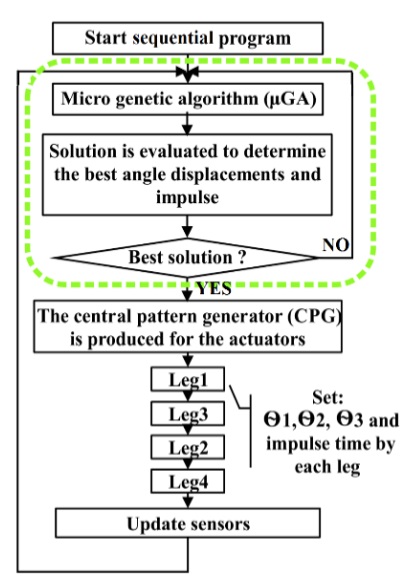This paper presents a novel micro-segmented genetic algorithm (μsGA) to identify the best solution for the locomotion of a quadruped robot designed on a rectangular ABS plastic platform. We compare our algorithm with three similar algorithms found in the specialized literature: a standard genetic algorithm (GA), a micro-genetic algorithm (μGA), and a micro artificial immune system (μAIS). The quadruped robot prototype guarantees the same conditions for each test. The platform was developed using 3D printing for the structure and can accommodate the mechanisms, sensors, servomechanisms as actuators. It also has an internal battery and a multicore embedded system (mES) to process and control the robot locomotion. This research proposes a μsGA that segments the individual into specific bytes. μGA techniques are applied to each segment to reduce the processing time; the same benefits as the GA are obtained, while the use of a computer and the high computational resources characteristic of the GA are avoided. This is the reason why some research in robot locomotion is limited to simulation. The results show that the performance of μsGA is better than the three other algorithms (GA, μGA and AIS). The processing time was reduced using a mES architecture that enables parallel processing, meaning that the requirements for resources and memory were reduced. This research solves the problem of continuous locomotion of a quadruped robot, and gives a feasible solution with real performance parameters using a μsGA bio-micro algorithm and a mES architecture.

